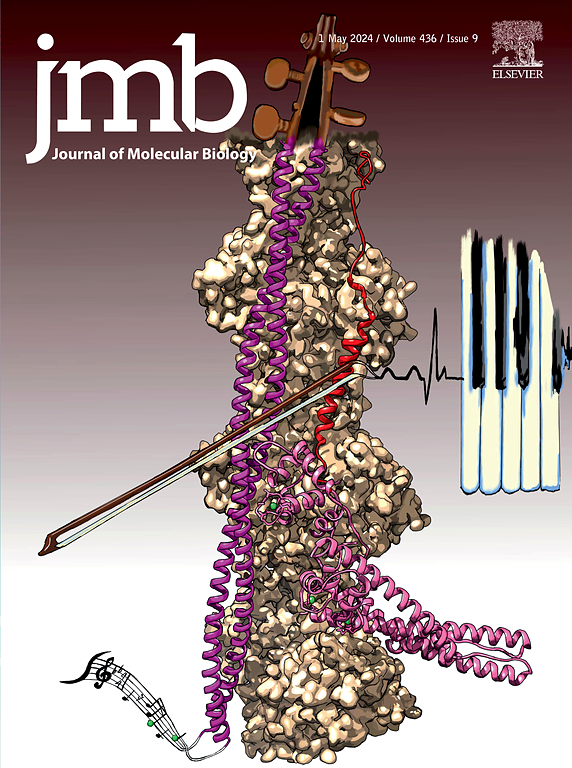用PCR扩增子直接转染同源重组产生重组mimivirus。
IF 4.5
2区 生物学
Q1 BIOCHEMISTRY & MOLECULAR BIOLOGY
引用次数: 0
摘要
巨型病毒是大型双链DNA病毒,编码数百个基因。这些基因被认为是重新编程宿主细胞机制,这反过来又调节了环境中的全球营养循环。然而,由于分子生物学工具的限制,巨型病毒基因的功能在很大程度上是未知的。最近,在感染自由生活的阿米巴(Acanthamoeba castellanii)的巨型病毒中发现了反向遗传系统。其中一种方法依赖于质粒转染的同源重组,但质粒的构建通常是费力的。在这项研究中,我们开发了一种改进的方法,直接将PCR扩增子转染到宿主细胞中,产生重组巨型病毒mimivirus,这是一种广泛用于出芽酵母和其他生物的方法。因此,我们成功地生成了一个带有标记基因的重组mimivirus。我们的研究结果表明,一种无细菌的方法可以应用于巨型病毒来产生重组体,从而加快了与这些病毒相关的进一步实验研究。本文章由计算机程序翻译,如有差异,请以英文原文为准。

Generation of a Recombinant Mimivirus by Homologous Recombination Using Direct Transfection of a PCR Amplicon
Giant viruses are large double-stranded DNA viruses encoding hundreds of genes. These genes are considered to reprogram the host cell machinery, which, in turn, modulates the global nutrient cycles in the environment. However, the functions of giant-virus genes are largely unknown due to the limited molecular biology tools. Recently, reverse-genetics systems have been developed in giant viruses infecting a free-living amoeba, Acanthamoeba castellanii. One of the methods relies on homologous recombination by plasmid transfection, but plasmid construction is generally laborious. In this study, we developed a modified method to generate a recombinant giant virus, mimivirus, with direct transfection of a PCR amplicon into host cells, a widely used approach in budding yeast and other organisms. Consequently, we successfully generated a recombinant mimivirus with a marker gene. Our results demonstrated that a bacterium-free method could be applied to giant viruses to generate recombinants, accelerating further experimental studies related to these viruses.
求助全文
通过发布文献求助,成功后即可免费获取论文全文。
去求助
来源期刊

Journal of Molecular Biology
生物-生化与分子生物学
CiteScore
11.30
自引率
1.80%
发文量
412
审稿时长
28 days
期刊介绍:
Journal of Molecular Biology (JMB) provides high quality, comprehensive and broad coverage in all areas of molecular biology. The journal publishes original scientific research papers that provide mechanistic and functional insights and report a significant advance to the field. The journal encourages the submission of multidisciplinary studies that use complementary experimental and computational approaches to address challenging biological questions.
Research areas include but are not limited to: Biomolecular interactions, signaling networks, systems biology; Cell cycle, cell growth, cell differentiation; Cell death, autophagy; Cell signaling and regulation; Chemical biology; Computational biology, in combination with experimental studies; DNA replication, repair, and recombination; Development, regenerative biology, mechanistic and functional studies of stem cells; Epigenetics, chromatin structure and function; Gene expression; Membrane processes, cell surface proteins and cell-cell interactions; Methodological advances, both experimental and theoretical, including databases; Microbiology, virology, and interactions with the host or environment; Microbiota mechanistic and functional studies; Nuclear organization; Post-translational modifications, proteomics; Processing and function of biologically important macromolecules and complexes; Molecular basis of disease; RNA processing, structure and functions of non-coding RNAs, transcription; Sorting, spatiotemporal organization, trafficking; Structural biology; Synthetic biology; Translation, protein folding, chaperones, protein degradation and quality control.
 求助内容:
求助内容: 应助结果提醒方式:
应助结果提醒方式:


